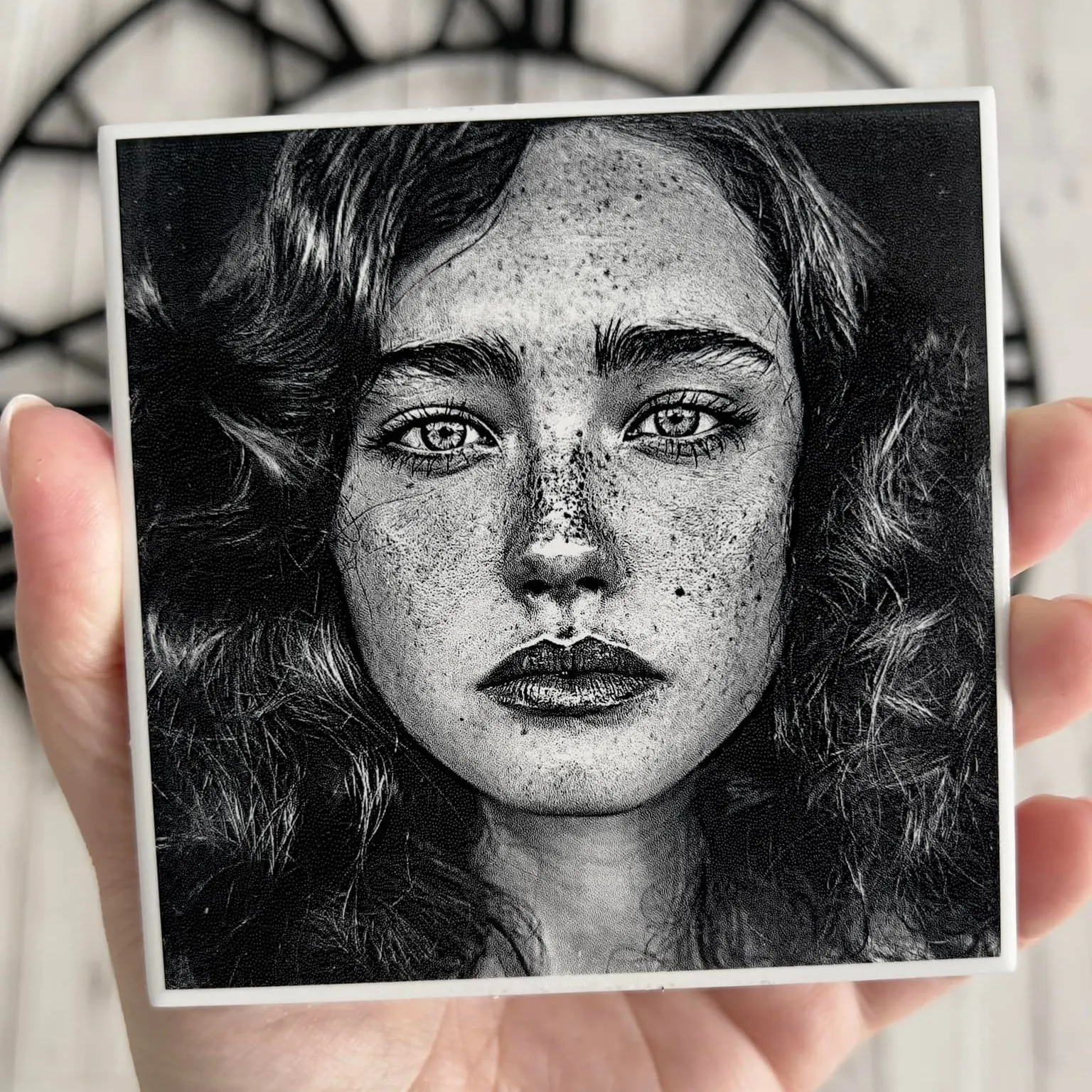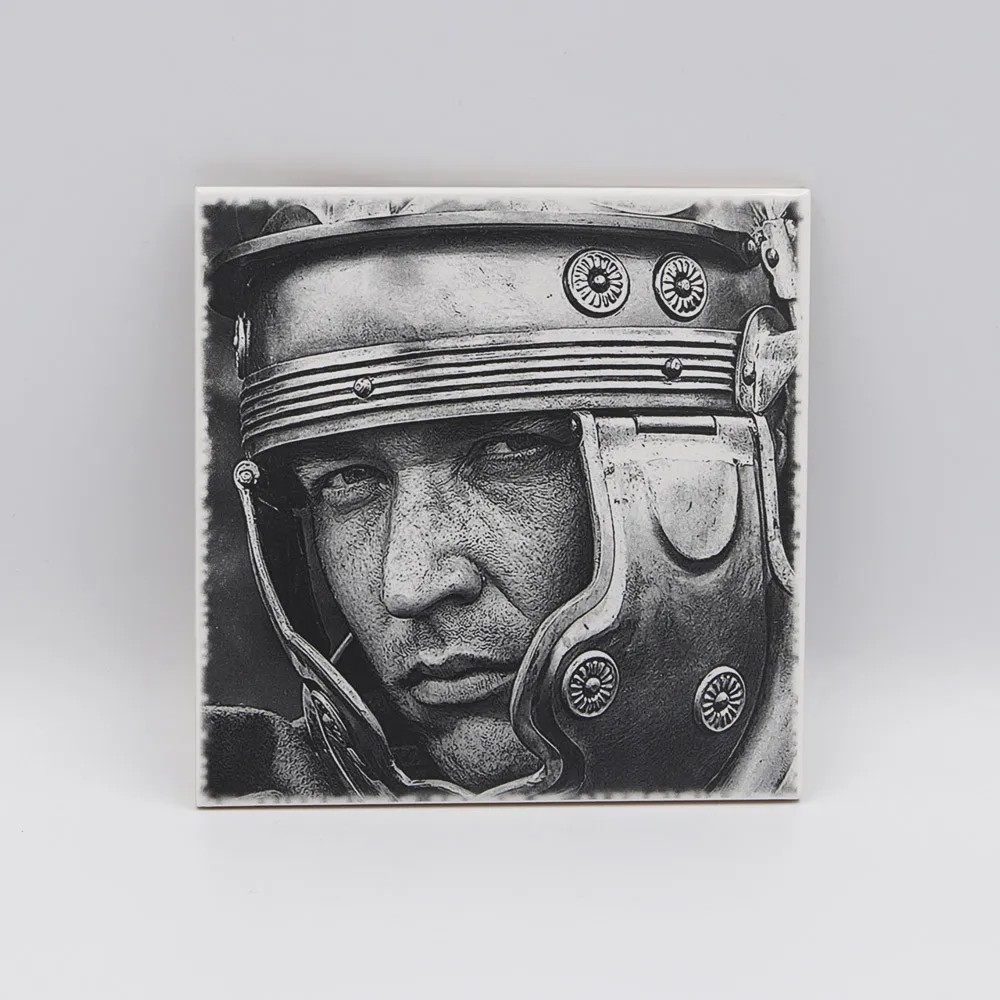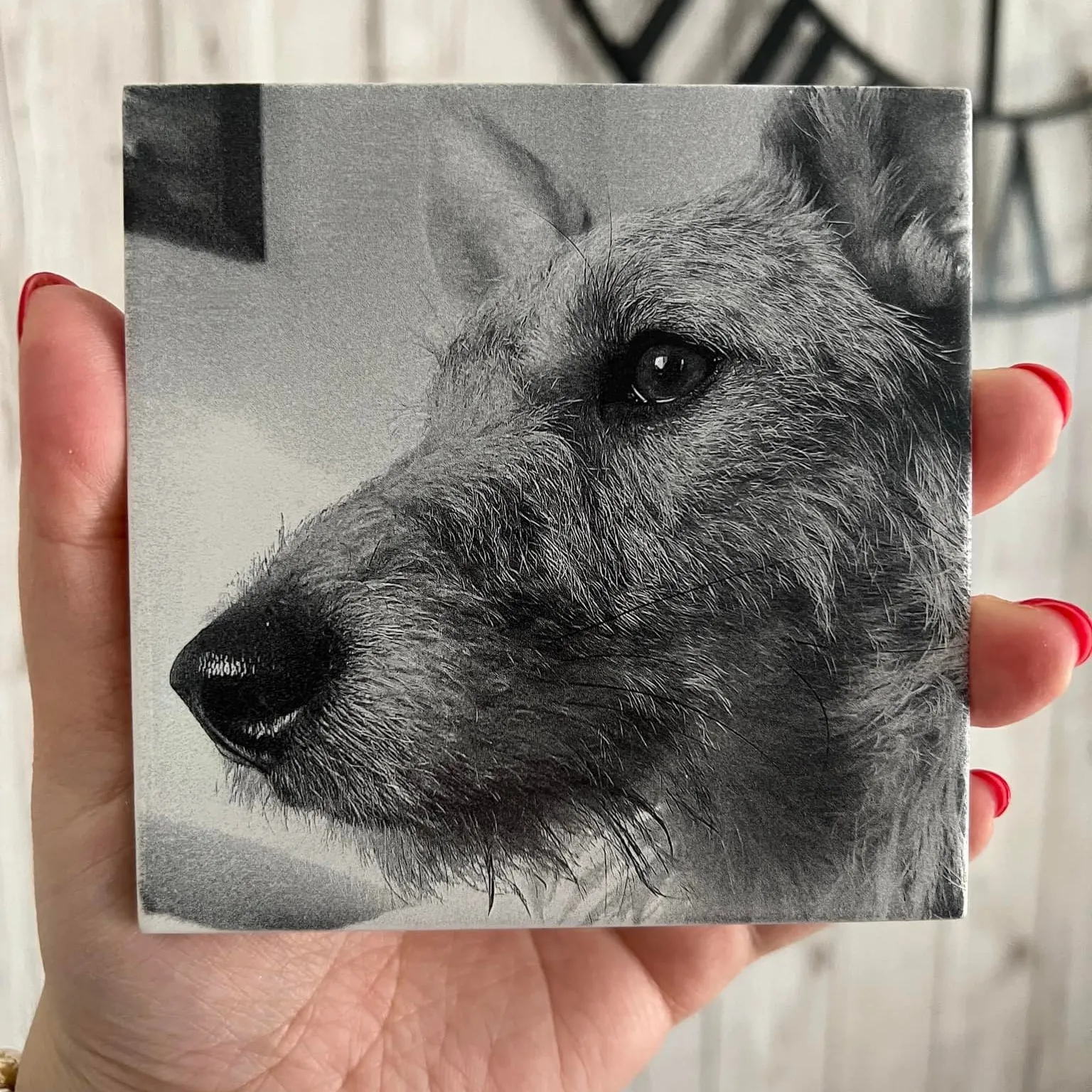Engraving Ceramics with CNC Lasers
The Significance of Ceramic Tile Type in Diode Laser Engraving
The choice of ceramic tile significantly impacts the process of engraving with a diode laser due to variations in tile properties that influence the interaction between the laser beam and the tile surface.
Several factors should be taken into account when selecting a ceramic tile for laser engraving:
- Absorption: The ability of the tile to absorb the laser beam is critical in determining the energy absorption and engraving depth. Tiles with higher absorption rates are more easily engraved, while those with lower absorption rates may necessitate increased laser energy or multiple passes to achieve a visible engraving.
- Hardness: The hardness of the tile affects the engraving process. Harder tiles are more resistant to engraving and may require a more powerful laser or multiple passes to create a visible engraving. Softer tiles, on the other hand, are easier to engrave but may be more susceptible to chipping or cracking.
- Color: The color of the tile is a consideration since darker tiles tend to absorb more laser energy than lighter tiles, potentially resulting in deeper engravings.
- Glaze: The presence of a glaze on the surface of some ceramic tiles can impact the engraving process. Tiles with a glaze may be more challenging to engrave because the glaze can reflect the laser beam, reducing the amount of energy absorbed by the tile.
By carefully considering these factors, it is possible to select a ceramic tile that is suitable for laser engraving and capable of producing the desired results.
The Best Laser for Engraving Ceramic Tiles, Recommended by Nicky Norton!
The PLH3D-XT-50, with its advanced capabilities for engraving at 500 DPI resolution, delivers exceptional engraving quality on various materials, such as ceramic tiles. Its high power density unlocks new possibilities for precise cutting and engraving. Moreover, when compared to laser heads lacking anamorphic optics, the PLH3D-XT-50 enables significantly faster cutting and engraving processes.
Preparing a Ceramic Tile for Diode Laser Engraving
The following steps outline the recommended procedure for engraving a ceramic tile with a diode laser:
- Cleaning the tile:Thoroughly cleanse the ceramic tile to eliminate any dirt, dust, or contaminants that might hinder the engraving process. Employ a gentle detergent and a soft cloth to delicately clean the tile's surface.
- Glaze removal (if applicable): In instances where the tile possesses a glaze, it may be necessary to eliminate it before proceeding with engraving. This can be accomplished by carefully sanding the tile's surface using fine grit sandpaper.
- Marking the engraving area: Utilize a pencil or another appropriate marking tool to designate the specific region on the tile where engraving is intended. This will facilitate accurate alignment of the laser and ensure precise engraving within the desired area.
- Securing the tile: To prevent unintended movement during the engraving process, it is imperative to secure the ceramic tile in a fixed position. This can be achieved by utilizing clamps or other suitable mechanisms to firmly hold the tile in place.
- Laser setup: Adhere to the manufacturer's guidelines for configuring the laser parameters based on the tile type and desired engraving depth. This may involve adjusting the laser's power output and focus to achieve the desired outcomes.
By following these steps, one can effectively prepare a ceramic tile for diode laser engraving, thereby facilitating successful and accurate results.
Software Options for Diode Laser Engraving on Ceramic Tiles
Various software programs can be utilized to create designs for engraving ceramic tiles with a diode laser. Some popular options include:
Adobe Illustrator: This professional-grade vector graphics editor is widely used for laser engraving design creation. With a comprehensive toolset, users can create and modify vector graphics and export files in formats compatible with laser engraving machines.
CorelDRAW: Similar to Adobe Illustrator, CorelDRAW is a popular vector graphics editor suitable for designing laser engravings.
Inkscape: Inkscape provides an alternative for laser engraving design creation to Adobe Illustrator and CorelDRAW as a free and open-source vector graphics editor.
LaserGRBL: Specifically designed for laser engraving machine control, LaserGRBL is free and open-source software. It allows importing designs from other software programs and converting them into G-code, which serves as the command language for laser engraving machines.
Determining the Engraving Image Resolution for Ceramic Tile Engraving with a Diode Laser
The appropriate resolution of the engraving image on a ceramic tile when using a diode laser depends on the specific laser engraving machine employed and the desired level of detail. To achieve optimal results, it is crucial to utilize a high-resolution image that enables the laser to generate precise and intricate engravings.
As a general guideline, it is advisable to employ an image with a minimum resolution of 300 dots per inch (DPI) for laser engraving. This resolution ensures that the laser can accurately reproduce fine details, even when engraving at smaller sizes. However, for exceptionally intricate or delicate engravings, higher resolution images might be necessary. Additionally, it is essential to consider the size ratio between the engraving and the ceramic tile.
When the engraving occupies a relatively small area on the tile, a higher resolution image becomes more critical to attain the desired level of detail. Conversely, if the engraving is relatively large compared to the tile, a lower resolution image may suffice.
By utilizing a high-resolution image and taking into account the size ratio between the engraving and the ceramic tile, superior results can be achieved when performing diode laser engraving.





